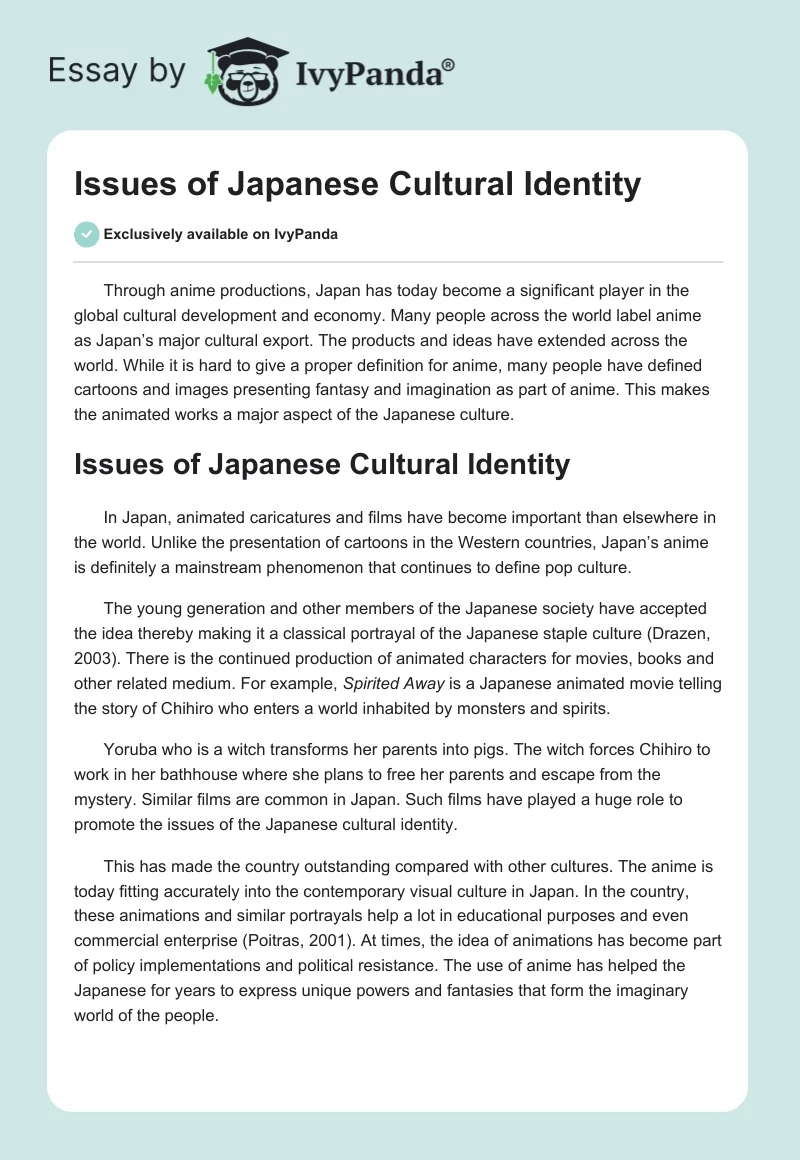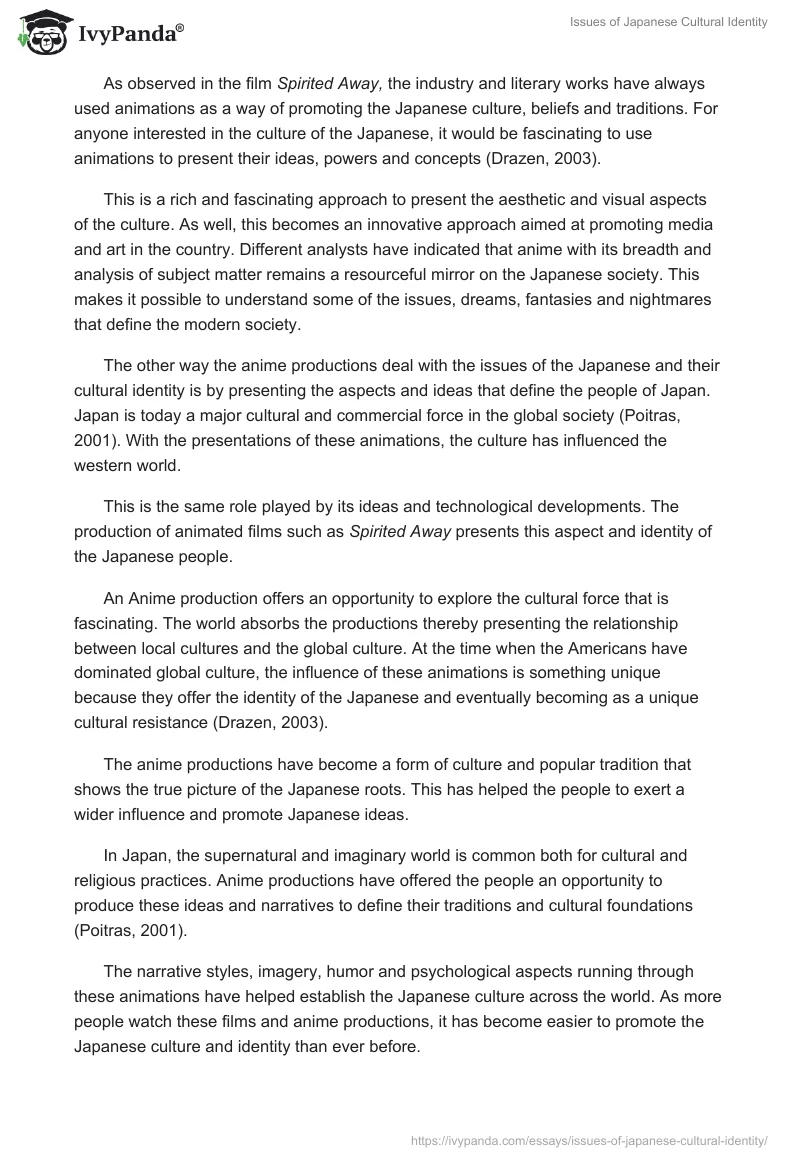Through anime productions, Japan has today become a significant player in the global cultural development and economy. Many people across the world label anime as Japan’s major cultural export. The products and ideas have extended across the world. While it is hard to give a proper definition for anime, many people have defined cartoons and images presenting fantasy and imagination as part of anime. This makes the animated works a major aspect of the Japanese culture.
Issues of Japanese Cultural Identity
In Japan, animated caricatures and films have become important than elsewhere in the world. Unlike the presentation of cartoons in the Western countries, Japan’s anime is definitely a mainstream phenomenon that continues to define pop culture.
The young generation and other members of the Japanese society have accepted the idea thereby making it a classical portrayal of the Japanese staple culture (Drazen, 2003). There is the continued production of animated characters for movies, books and other related medium. For example, Spirited Away is a Japanese animated movie telling the story of Chihiro who enters a world inhabited by monsters and spirits.
Yoruba who is a witch transforms her parents into pigs. The witch forces Chihiro to work in her bathhouse where she plans to free her parents and escape from the mystery. Similar films are common in Japan. Such films have played a huge role to promote the issues of the Japanese cultural identity.
This has made the country outstanding compared with other cultures. The anime is today fitting accurately into the contemporary visual culture in Japan. In the country, these animations and similar portrayals help a lot in educational purposes and even commercial enterprise (Poitras, 2001). At times, the idea of animations has become part of policy implementations and political resistance. The use of anime has helped the Japanese for years to express unique powers and fantasies that form the imaginary world of the people.
As observed in the film Spirited Away, the industry and literary works have always used animations as a way of promoting the Japanese culture, beliefs and traditions. For anyone interested in the culture of the Japanese, it would be fascinating to use animations to present their ideas, powers and concepts (Drazen, 2003).
This is a rich and fascinating approach to present the aesthetic and visual aspects of the culture. As well, this becomes an innovative approach aimed at promoting media and art in the country. Different analysts have indicated that anime with its breadth and analysis of subject matter remains a resourceful mirror on the Japanese society. This makes it possible to understand some of the issues, dreams, fantasies and nightmares that define the modern society.
The other way the anime productions deal with the issues of the Japanese and their cultural identity is by presenting the aspects and ideas that define the people of Japan. Japan is today a major cultural and commercial force in the global society (Poitras, 2001). With the presentations of these animations, the culture has influenced the western world.
This is the same role played by its ideas and technological developments. The production of animated films such as Spirited Away presents this aspect and identity of the Japanese people.
An Anime production offers an opportunity to explore the cultural force that is fascinating. The world absorbs the productions thereby presenting the relationship between local cultures and the global culture. At the time when the Americans have dominated global culture, the influence of these animations is something unique because they offer the identity of the Japanese and eventually becoming as a unique cultural resistance (Drazen, 2003).
The anime productions have become a form of culture and popular tradition that shows the true picture of the Japanese roots. This has helped the people to exert a wider influence and promote Japanese ideas.
In Japan, the supernatural and imaginary world is common both for cultural and religious practices. Anime productions have offered the people an opportunity to produce these ideas and narratives to define their traditions and cultural foundations (Poitras, 2001).
The narrative styles, imagery, humor and psychological aspects running through these animations have helped establish the Japanese culture across the world. As more people watch these films and anime productions, it has become easier to promote the Japanese culture and identity than ever before.
Conclusion
The important thing is that the anime productions are in the form of narratives not visual styles. The Japanese consider animated films as a medium in which there is the combination of the visual aspects and elements. The approach makes generic and philosophical structures that help to produce a unique world.
The reason why the Japanese use animations to present these ideas is that their world and culture is tragic, sexualized and provocative. The complexity of the stories makes the anime productions effective and analytical of the Japanese cultural aspects. The use of anime productions in Japan is a practice that has helped position the cultural identity of the people. The influence has been enormous to the western world thereby making the culture unique and spectacular.
References
Drazen, P. (2003). Anime Explosion: The What? Why and Wow of Japanese Animation. Berkeley: Stone Bridge Press.
Poitras, G. (2001). Anime Essentials: Everything a Fans Needs to Know. Berkeley: Stone Bridge Press.


